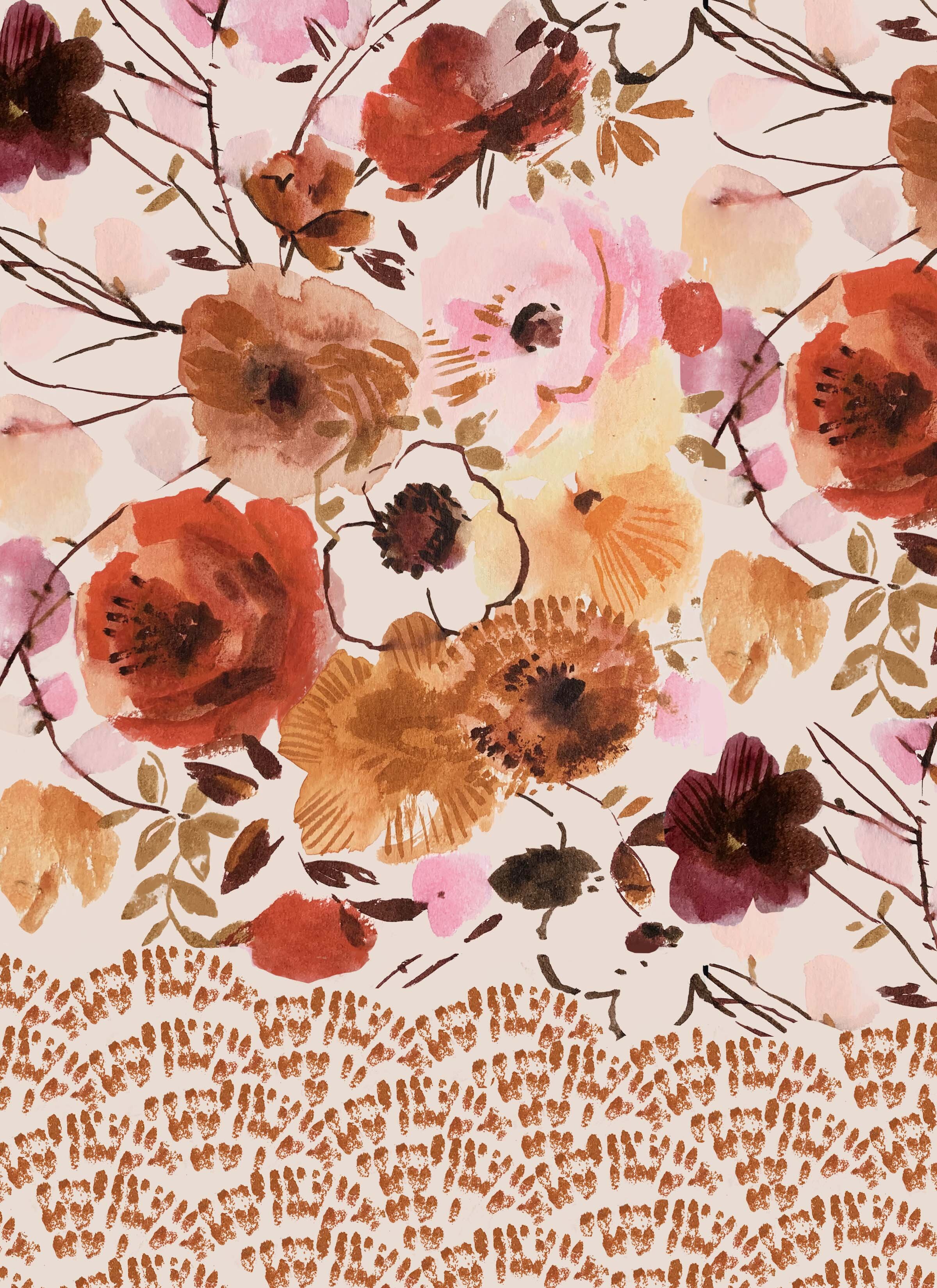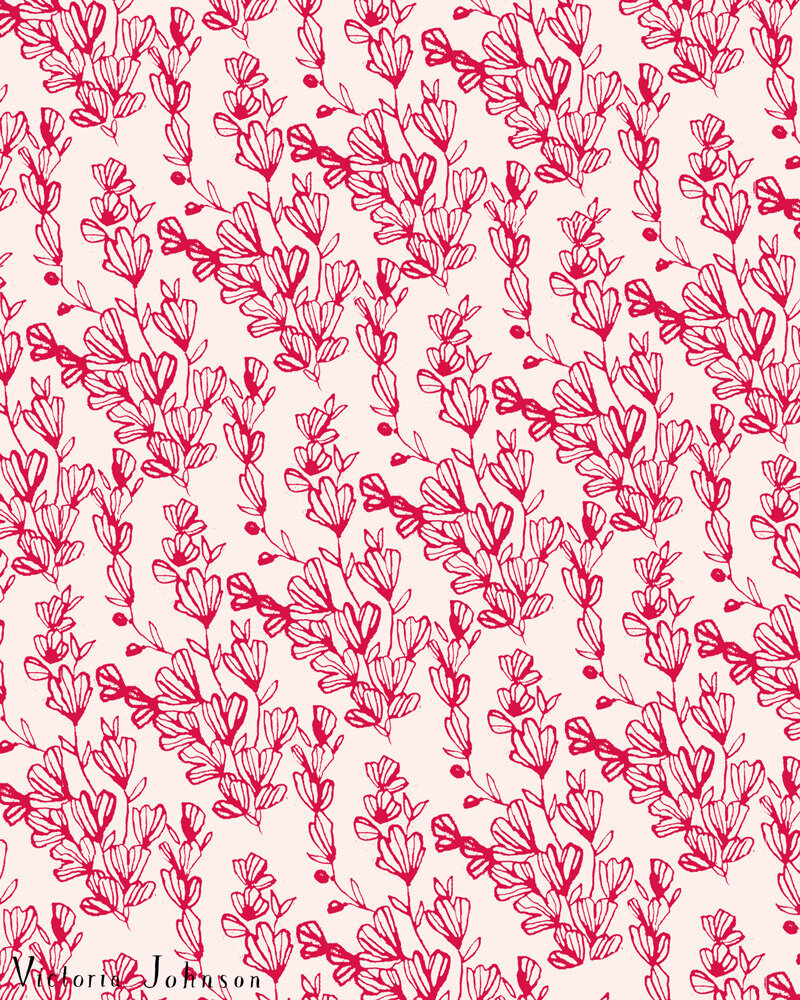Favourite subject? Art or maths? How to create more and think less.
Implied Versus Technical Repeats
If you want to see your artwork on a variety of products you need to know how to create a pattern - a repeating image, calculated to run seamlessly, horizontally and vertically, across a surface - usually fabric or paper products (used for soft furnishings, clothing, quilting fabrics, cards, gift bags, gift wrap, etc).
You need to understand how to position the motifs of your design with mathematical precision so that when they’re repeated they tesselate seamlessly and fluidly with one another - from side to side and top to bottom. In order to execute a technical repeat efficiently, you need to be up to date with the correct software and prepared to spend a lot of time shuffling design elements around.
If you’re new to the process or not particularly adept at mathematical precision you may find that the effort required to create a technical repeat starts to suck the joy out of the creative process and the results are less fluid and way more time-consuming than you would have liked.
I have good news for you. You don’t have to do it. You do need to understand how the process works. You do need to know the difference between a half-drop and tiled repeat. And you should be capable of creating both... if necessary. But when you’re at the stage of creating, with a view to presenting the artwork to clients, in the hope they’ll buy it or commission a project, you only need to produce what’s called an implied repeat.
I spoke to Craig Tudhope, owner of Nuprimary, a leading US print studio, selling to both fashion and home furnishing retailers. They sell an enormous quantity of absolutely stunning designs to some of the best-known retailers in the US, from high-end to high-street. All their designs are presented as swatches featuring implied repeats. They, like most studios, don’t have time to execute so many elaborate designs as technical repeats. They want to knock their clients out with a huge array of beautifully conceived, original ideas like these below. That’s what their clients are paying for.
Most retailers purchase/license implied repeats and employ teams of in-house designers that adapt them to their needs, using advanced software for that purpose. Others purchase or license artwork on the basis of the implied repeat and then ask the original designer (you) to create a technical repeat to their specifications, maybe taking into account fabric/roller width, etc. They may even license/commission on the basis of one design then ask the designer to build that piece out into a series of technical repeats.
The point is that at the stage of purchasing/licensing/commissioning they just want to see how the imagery and concept work and whether it will be suitable for their needs. This removes the need for a lot of work for you.
An implied repeat looks like a technical repeat. It employs the same principles as a technical repeat - the imagery is more or less half-dropped (staggered like laid bricks) or tiled (placed in rows and columns). The difference is that it doesn’t work - because it’s done imprecisely by eye. These are two of mine. If these patterns were repeated endlessly across a page the elements would be badly misaligned and they’d look terrible.
But I can still sell these patterns because they give the overall impression of how the imagery would work in repeat and provide complete motifs that can be extracted by an in-house designer (or me) and arranged to suit the exact needs of the client.
The main benefits of working like this are;
It takes you way less time.
Your focus is on the aesthetics of the design, not the technical requirements of creating a repeat. You’re concentrating on the style and flow of the florals, on executing an idea rather than a perfect, production-ready piece.
You’re enjoying the creative process, playing with composition, tossing the elements randomly around the page until you find a combination that works - without thinking about whether the motif exactly lines up, etc.
If you are a genius at creating technical repeats, if the process comes easily and quickly to you and you enjoy it - don’t stop!
But - if you aren’t - learn how technical repeats work, understand the process, then try an implied repeat.
Check out the Nuprimary Instagram page to see more of their gorgeous work and the calibre of their clients.
You can learn more about art and design by taking one of my courses. Create Collections will be running at the end of Oct. Dates and details will be announced first via my newsletter. Classes fill up fast so please make sure you’ve signed up.









